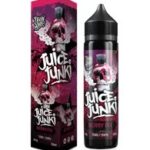There are four basic categories of base oil: Group I, Group II, Group III, and sour gas. Each type is characterized by a chemical composition that varies in content. Group, I base oils have the lowest saturate concentration. Group II and Group III base oils contain higher saturate concentrations. For your car, Group II is the best choice. Group III base oils are best for high-mileage vehicles. If you want to get more info, get help from a reliable base oil supplier.
Group I:
The difference between Group I and Group II base oils is in their composition. Group I is comprised of saturates, while Group II has a much lower content of saturates and less than 0.3 percent sulfur. Group III base oils have higher saturates but less than 0.5 percent sulfur and are usually over 120 degrees on the viscosity scale. These oils are usually refined to a much higher degree than Group II oils and are considered synthetic, although they are not. Group IV base oils, on the other hand, are synthetic polyalphaolefins and are formulated to be highly stable and abrasion-resistant.
Group II:
Group I and II of base oils are both the most common forms of industrial oils. Although the Group I base oils are the most common, the Group II ones are increasingly being used for automobile engine oils. Both types undergo a hydrotreating process that involves using hydrogen gas to extract undesirable components from crude oil. This process yields base oils that are colorless and clear, with relatively little sulfur or nitrogen. However, Group II oils do not always meet API standards.
Group III:
The creation of Group III base oil is a complex process. Crude oil is first fractionally distilled to separate it into various hydrocarbons: petrol, diesel, kerosene, and heating oils. The remaining fractions are refined to produce lubricating oil, accounting for one to two percent of the crude oil. The resulting oil has a chain length of 18 to 40 carbon atoms.
Group IV:
The base oil’s Group III and Group IV differ in viscosity and have poor evaporation and anti-oxidation properties. These two groups have little relationship with the price of crude oil. However, both are used in automotive engine oil formulations. A Group II “Plus” oil is similar to a Group III oil but does not meet the API’s requirements. The group IV oil is not used to produce lubricants for cars.












